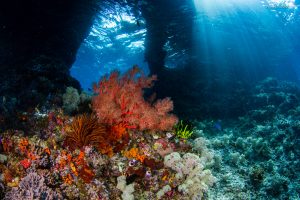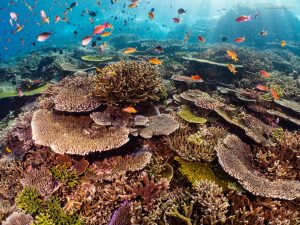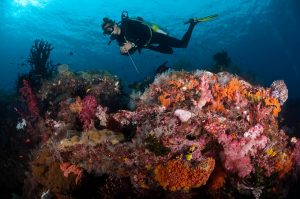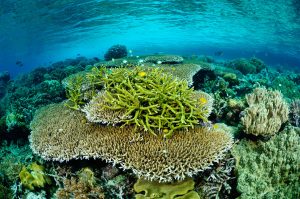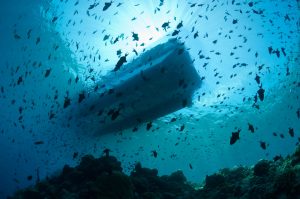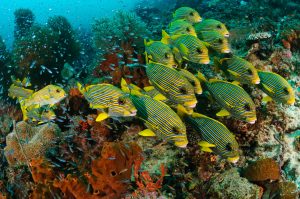Resources
Our BluHope partners have provided fantastic images of our ocean and all life beneath the waves. Enjoy the colour and beauty of this underwater world, and the amazing creatures that inhabit it.
We are also sharing images that are becoming all too familiar, of plastic pollution and the impact it is having on marine life and ecosystem.
These images are credited to the photographer or organisation. If you use these images, please acknowledge them and their incredible creativity and hard work. We can all take inspiration from these windows on the underwater world – to inspire us to take care and do all we can to stop plastic pollution. #BluHope
Alex Lindbloom
Plastic Oceans by Alastair Scarlett
Plastic Oceans by Michael Pitts

ZuBlu
Wobbegongs are ambush predators that rely on remarkable camouflage to remain undetected. They use tassles along the edge of the body to break up their outline. The coastal waters of Triton Bay are rich in nutrients washed down from the surrounding hills. As a result underwater life is dominated by filter feeders such as colorful soft corals and black corals. Triton Bay is also very well known for its marine biodiversity. at the southern end of the Bay are healthy coral reefs with plenty of fish life. The reefs of Raja Ampat are some of the most diverse and healthiest in the world and new species are discovered every year. The karst lanscape of the area means that many of the islands are riddled with caves and caverns. The reefs of Raja Ampat are some of the most diverse and healthiest in the world. A colorful community of elephant ear sponges, sea whips and sea fans, Misool, West Papua, Indonesia. The strong currents in the Misool area create perfect conditions for filter feeders such as soft corals, sea fans and sponges and in most areas, the rocky substrate is literally carpeted in life. In more sheltered areas, delicate hard corals also proliferate. The reefs of Raja Ampat are some of the most diverse and healthiest in the world. The strong currents in the Misool area create perfect conditions for filter feeders such as soft corals, sea fans and sponges and in most areas, the rocky substrate is literally carpeted in life. In more sheltered areas, delicate hard corals also proliferate. The reefs of Raja Ampat are some of the most diverse and healthiest in the world. The strong currents in the Misool area create perfect conditions for filter feeders such as soft corals, sea fans and sponges and in most areas, the rocky substrate is literally carpeted in life. The reefs of Raja Ampat are some of the most diverse and healthiest in the world. The coastal waters of Triton Bay are rich in nutrients washed down from the surrounding hills. As a result underwater life is dominated by filter feeders such as colorful soft corals and black corals. Triton Bay is also very well known for its marine biodiversity. at the southern end of the Bay are healthy coral reefs with plenty of fish life. This resort has been built to minimise impact on the environment. It has hydroponic waste water treatment systems and has been built largely from drift wood. Divers returning from a dive at ‘Nudibranch Rock’, Misool, West Papua, Indonesia. This shark has only recently been described. It uses its fins to walk across the reef at night, hiding away in holes in the corals during the day. The reefs of Raja Ampat are some of the most diverse in teh world and new species are discovered very year. Many of Bunaken’s reefs have large buttresses of coral that extend out into the currents. Anthias form large schools at the top of these buttresses where they are guaranteed a steady supply of food. Bunaken Marine Park is a very popular dive destination, famous for its beautiful coral reefs, marine biodiversity and vertical walls. Bunaken Marine Park is a very popular dive destination, famous for its beautiful coral reefs, marine biodiversity and vertical walls. Octopus hidden with a discarded glass bottle, Lembeh Strait, Sulawesi, Indonesia. Three Ceratosoma nudibranchs gathered to mate, Lembeh Strait, Sulawesi, Indonesia. The Lembeh Strait in N Sulawesi is famous for its unusually high marine biodiversity, particularly of unusual animals that live on the exposed sand areas. Redtooth triggerfish are plankton feeders that form dense schools at the edge of reefs. North Sulawesi is a very popular dive destination, famous for its beautiful coral reefs, marine biodiversity and vertical walls. The beautiful Banggi cardinalfish was originally only found on the Banggi Islands. However, due to their popularity in the aquarium business, they have been introduced into several other areas, including the Lembeh Strait. These fish like to form dense schools – their markings serve to help individual fish disappear into a confusing mass of stripes and dots making it very difficult for a predator to pick out an individual. The Lembeh Strait in N Sulawesi is famous for its unusually high marine biodiversity, particularly of unusual animals that live on the exposed sand areas. School of striped sweetlips, Raja Ampat Islands, West Papua, Indonesia. The Raja Ampat Islands in West Papua are famous for their extraordinary marine biodiversity. The reefs around these islands are thought to be some of the most biodiverse on the planet. Mixed school of yellowtail and blue and yellow fusilier, Raja Ampat Islands, West Papua, Indonesia. The Raja Ampat Islands in West Papua are famous for their extraordinary marine biodiversity. The reefs around these islands are thought to be some of the most biodiverse on the planet. Manta rays congregate in areas where strong currents are funnelled through reefs. These areas concentrate plankton on which mantas feed. Mantas also congregate at cleaning stations, where small wrasse and butterflyfish clen parasites from the surface of the rays. Tourism is now a major business in the Komodo National Park. Divers visit the park using liveaboard boats operating out of Bali, or from the port of Labuan Bajo on Lombok. The Komodo National Park is home to the unique Komodo Dragon, but also has some remarkable marine life. Cold upwellings from the Indian Ocean to the south bring plenty of nutrients, providing food for a spectacular array of different species. Tourism is now a major business in the Komodo National Park. Divers visit the park using liveaboard boats operating out of Bali, or from the port of Labuan Bajo on Lombok. The Komodo National Park is home to the unique Komodo Dragon, but also has some remarkable marine life. Cold upwellings from the Indian Ocean to the south bring plenty of nutrients, providing food for a spectacular array of different species. These beautiful nudibranchs are common in the southern part of the Komodo National Park. Like all nudibranchs, they advertise the toxic nature with bright warning colors and markings. Obvious are the branched gills and the rhinophores, used by the nudibranch to search for prey. The Komodo National Park is home to the unique Komodo Dragon, but also has some remarkable marine life. Cold upwellings from the Indian Ocean to the south bring plenty of nutrients, providing food for a spectacular array of different species. Manta ray, Komodo National Park, Nusa Tenggara, Indonesia. Manta rays congregate in areas where strong currents are funnelled through reefs. These areas concentrate plankton on which mantas feed. Mantas also congregate at cleaning stations, where small wrasse and butterflyfish clen parasites from the surface of the rays. Tourism is now a major business in the Komodo National Park. Divers visit the park using liveaboard boats operating out of Bali, or from the port of Labuan Bajo on Lombok. The Komodo National Park is home to the unique Komodo Dragon, but also has some remarkable marine life. Cold upwellings from the Indian Ocean to the south bring plenty of nutrients, providing food for a spectacular array of different species. Paddy fields, nr Makassar, Sulawesi, Indonesia. Snappers and other fish often congregate around wrecks which provide them with shelter from predators. The island of Kapalai is a mecca for divers and famous for its unusual biodiversity. The island of Sipadan is close by. Mimic octopus are thought to mimic venomous or toxic animals such as sea snakes or lionfish. However, their remarkable display may simply be a highly visible warning that has evolved to scare away predators. Puri Jati is located on Bali’s north coast. Its featureless sandy bottom is home to a huge variety of unusual and interesting species known as ‘critters’ to ‘muck’ divers and photographers. Bali is a very popular holiday destination for divers and offers a wide variety of different types of diving, from reefs and wrecks to mucks sites such as Puri Jati and Gilimanuk. A swimmer crab running across the sand bottom, Puri Jati, Bali, Indonesia. Puri Jati is located on Bali’s north coast. Its featureless sandy bottom is home to a huge variety of unusual and interesting species known as ‘critters’ to ‘muck’ divers and photographers. Bali is a very popular holiday destination for divers and offers a wide variety of different types of diving, from reefs and wrecks to mucks sites such as Puri Jati and Gilimanuk. A pair of Coleman shrimps on a fire urchin, Seraya, Bali, Indonesia. Coleman shrimps are only found on fire urchins – they live in an obligate symbiosis with their host. The shrimps remove the stinging arms from a patch on the surface of the urchin. Seraya is located on Bali’s NE coast and has become very popular with divers and photographers searching for unusual species. The signature site, ‘Seraya Secrets’ has a barren sand floor with small patches of sponge and other encrusting life, and rocks in the shallows. Bali is a very popular holiday destination for divers and offers a wide variety of different types of diving, from reefs and wrecks to mucks sites such as Puri Jati and Gilimanuk.




